During the final year of the First World War, 1918, Bonnard worked mainly in Vernon. In the summer, Marthe and he spent time together in Uriage-les-Bains, a small spa town in the Isère, just outside the city of Grenoble at the western edge of the Alps. While he was there, he was photographed by a friend. Bonnard and Renoir were honoured by a group of young French artists, who made them honorary presidents of their society.
In September, Bonnard went to Cap d’Antibes, in le Midi between Cannes and Nice, where he stayed through the winter, well into the early part of the following year. He was visited there by Matisse and Signac, and seems to have largely painted nudes and windows during that period.

Although this painting of The Terrace from 1918 has many similarities with earlier works made at Grasse, the terrace itself appears different, suggesting that Bonnard may have found another location for his expansive views with intervening trees. If the grey forms in the distance are mountains rather than clouds, it is possible that he painted this when at Uriage, although the shadows imply that this view looks to the west, which would have been away from the mountains there.

House by the Path on the Cliff (1918) appears to have been painted among the sandy cliffs and dunes of northern France, rather than in Antibes on the Mediterranean. Although a hazy day, with quite a big sea running according to the waves, the roofs are brilliant red, even back to the church in the distance.
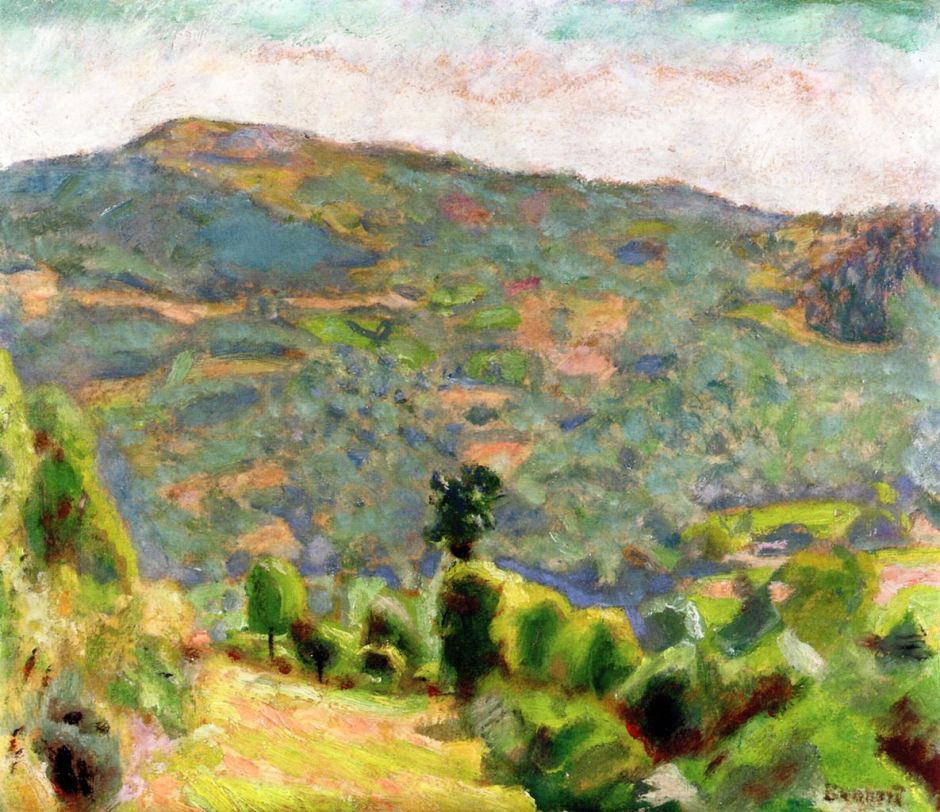
Landscape of Haute-Savoie (1918) shows the western foothills of the Alps, and must have been painted while Bonnard was staying in Uriage.

Bonnard had first developed his aerial views when painting street views in Paris early in his career. These increasingly included the window frame and sometime substantial parts of its surrounds, as seen in this Window in Uriage from 1918.
In 1919, Bonnard spent September in Luxeuil-les-Bains, another small spa town at the western edge of the Alps, in the far east of France. In early December, Auguste Renoir died, leaving Monet as the sole survivor of the original French Impressionists.

The Abduction of Europa (1919) is one of Bonnard’s rare mythological works, showing Europa being carried away to Cyprus by Jupiter, who has disguised himself as a white bull to entice her to get on his back. A classical motif in painting, the story is drawn from Ovid’s Metamorphoses, and has been painted by almost every major figurative painter.
Bonnard’s bull is dipping his back as the naked Europa sits on him. In the far distance, coloured red in the setting sun, is the island of Cyprus, their next destination. Bonnard’s coast is very Mediterranean, with a deep blue sea and intense colours.
One of Bonnard’s major works in either 1918 or 1919 was an apparently simple domestic scene, The Bowl of Milk. Once again London’s Tate Gallery has managed to collect a total of five pencil studies to accompany the finished painting, which give further insight into his compositional and working methods.
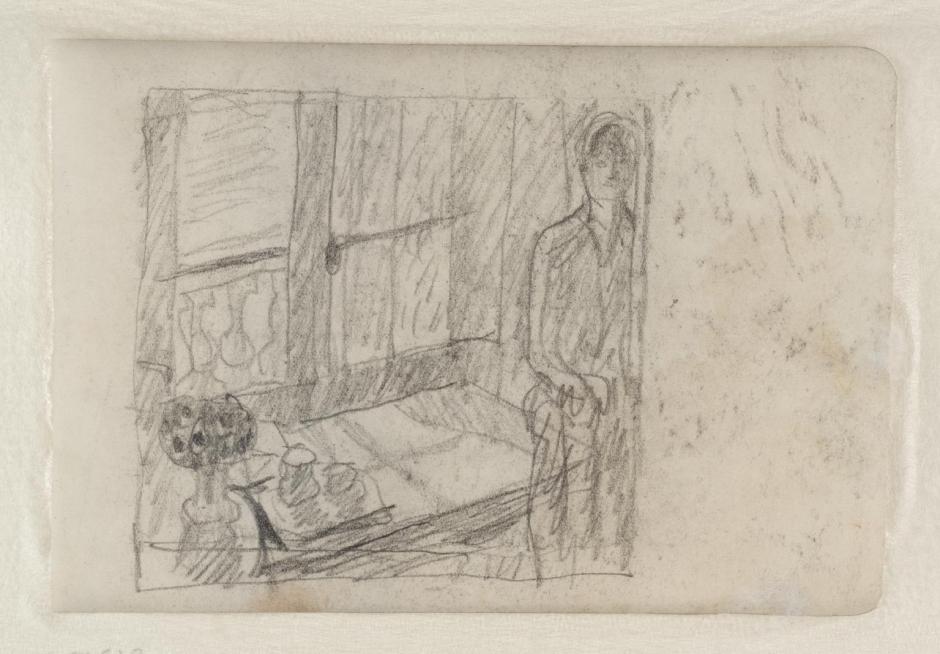
This late compositional study for The Bowl of Milk (1919) shows that Bonnard arrived at a motif consisting of a woman holding a bowl of milk at the right edge, the large window with its balcony outside, and a table positioned by the window. He tried different compositions, with one and two women, but chose this as the basis for the finished work.
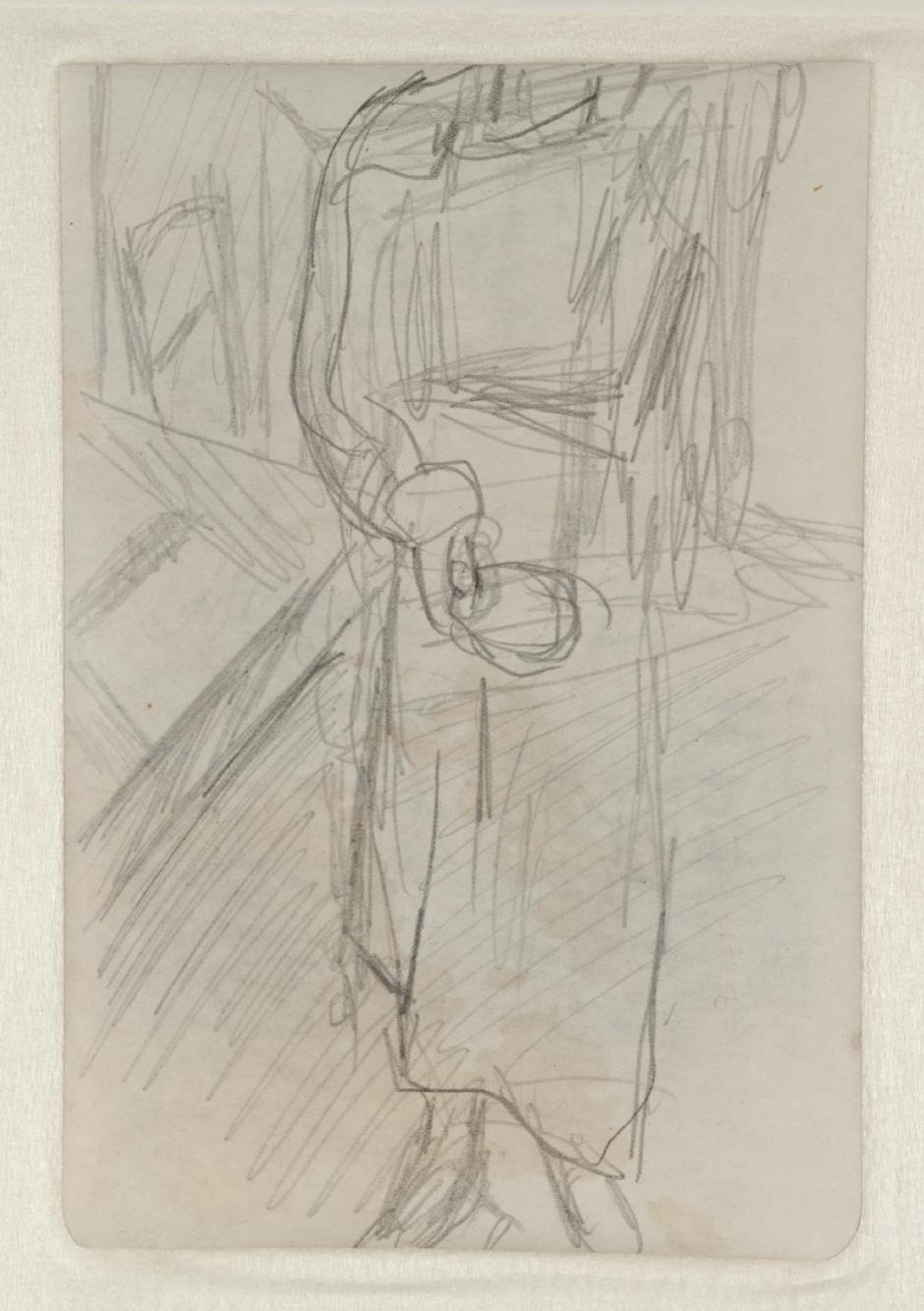
In this study for The Bowl of Milk, Bonnard concentrates on the figure holding the bowl out. He experimented with at least two other compositions, once of which includes a second woman.

Bonnard also sketched details, here of the balcony viewed through the window in The Bowl of Milk (1919). This was presumably a result of his campaign during the early years of the war to improve form in his works, rather than deploying colour to assemble details.
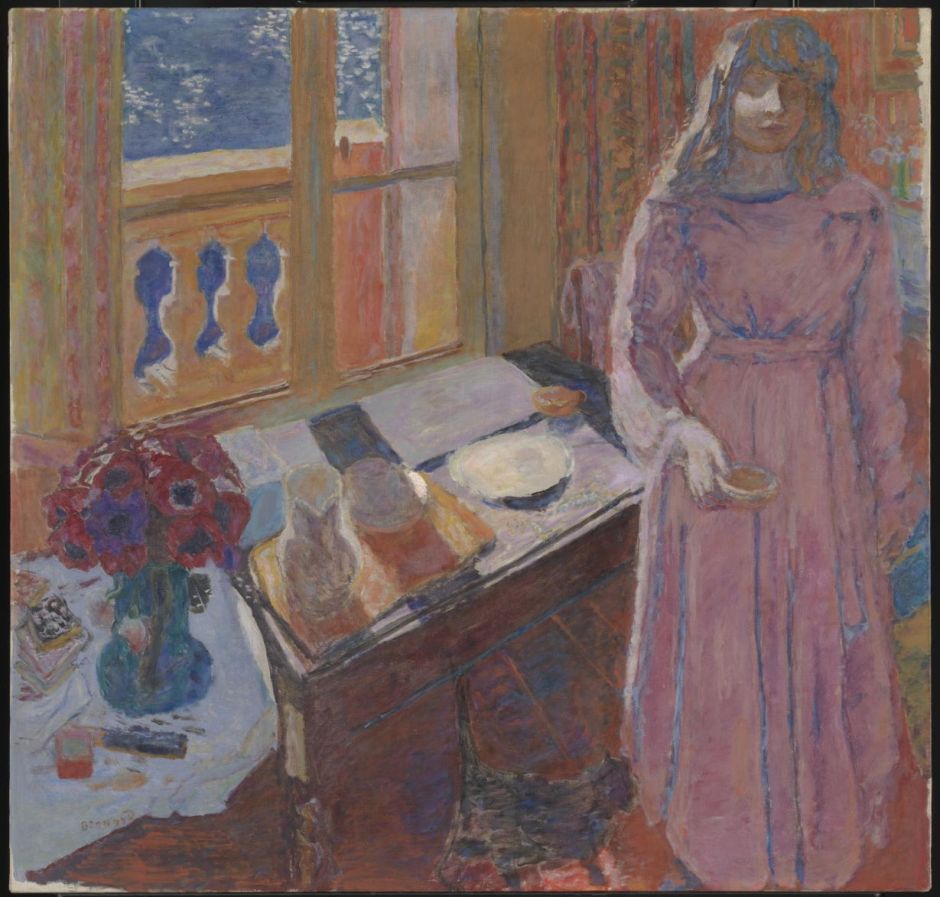
The result is The Bowl of Milk (1919), with its muted colours more appropriate for his earlier Nabi phase. The woman has just poured milk into a small bowl, which she is now about to put down for her cat. Beside her is a table laid out with four places for breakfast, with a large jug of milk on a tray. To the left is another table, on which is a vase of flowers and assorted small objects. The black cat is pacing the floor at the woman’s feet, as cats do.
This thoroughly peaceful, mundane domestic scene is thought to have been painted when Bonnard was staying in Cap d’Antibes, which would date it to 1918 or the early part of 1919. Although it looks informal if not spontaneous, it is the result of quite deliberate compositional work, and attention to details such as the form of the pillars on the balcony outside. In its informality is formality, in the model’s pose, the layout of the table settings, and the echoing verticals in the window and wallpaper. The model is thought to have been Renée Monchaty, and is clearly not Marthe.
In 1920, Bonnard stayed in Arcachon on the Bay of Biscay not far from Bordeaux, in the Spring, then went to Saint-Honoré-les-Bains in the middle of France in June. Towards the end of the year he went to stay with the sculptor and artist Henri Manguin in Saint-Tropez, where he remained until early 1921. During the summer, Bonnard painted the sets for the Ballets Suédois performance of Jeux by Nijinsky, in Paris. It was also a very productive year for his painting.
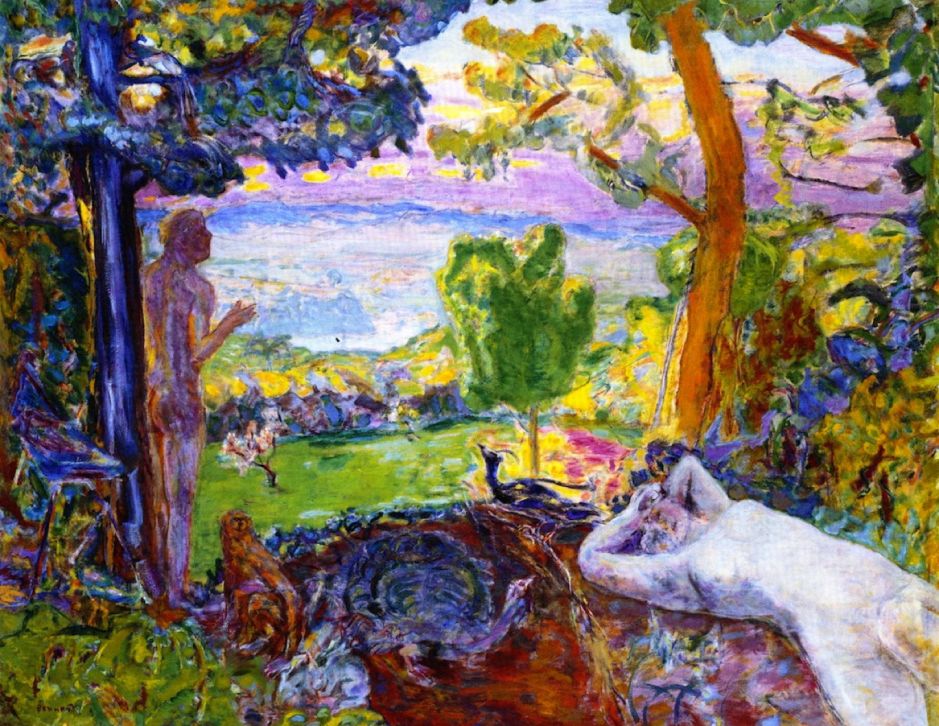
Earthly Paradise (1916-20) is a spectacular view, closely related to those from garden terraces. Marthe (I think) lies naked at the right, with a male nude stood under a tree at the left. Unlike many of his paintings of terraces, the trees here form a repoussoir around the landscape, rather than filling its centre. At the man’s feet is a small monkey, and the colours of trees, flowers and distant landscape are intense.

Pastoral Symphony (1916-20) uses a related composition with repoussoir for a rural idyll. At the left, a dairymaid is milking a cow. In the centre is a child playing, and at the right side a couple of women are petting a small deer. The countryside, complete with an older person and a horse, rolls back into the distance.

At this time, even his paintings of northern France have erupted into brilliant colour. Balcony at Vernonnet (c 1920) is an aerial view looking along the balcony of Bonnard’s house on the bank of the Seine, at its wild and overgrown garden.

Boats in the Harbor, Le Cannet (c 1920) shows yachts in the harbour at what I think should be referred to as Cannes, the name of the town on the Mediterranean coast, rather than Le Cannet, which is just inland of Cannes and where Bonnard later came to live.

Bonnard’s double portrait of the two Bernheim brothers Josse Bernheim-Jeune and Gaston Bernheim de Villiers from 1920 recognises the importance of their gallery to the artist. Their father, who died in 1915, had opened the gallery in Paris in 1863, and had started to promote Impressionists in 1874. In 1901, it held the first important exhibition of paintings by Vincent van Gogh in Paris, and went on to present works by the Nabis, Cézanne, Matisse, Modigliani, Utrillo, and others. It represented Bonnard between 1904-1940, and continues to specialise in his work.

If the Bernheim brothers had helped win Bonnard fame and success as an artist, his Portrait of Mademoiselle Renée Monchaty (1920) shows a model and lover who came close to ending his long relationship with Marthe. Bonnard met her in 1916, but their relationship came to an end when Marthe and Bonnard finally married in 1925. Within a month, Monchaty shot herself in the heart, surrounded by white roses in her bath.

Bonnard didn’t paint many portraits of himself, and his Self-Portrait with Beard from 1920 shows him in his mid-fifties, his suntanned face emerging from its camouflage against the background. He continued to pursue his art with a fierce independence, painting in his own way.
References
Guy Cogeval and Isabelle Cahn (2016) Pierre Bonnard, Painting Arcadia, Prestel. ISBN 978 3 791 35524 5.
Gilles Genty and Pierrette Vernon (2006) Bonnard Inédits, Éditions Cercle d’Art (in French). ISBN 978 2 702 20707 9.

